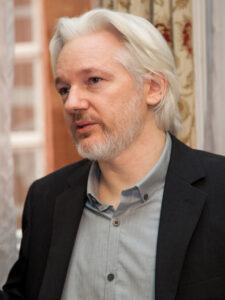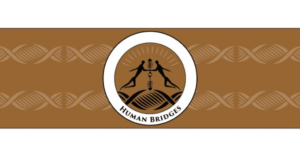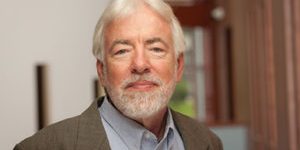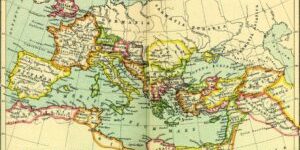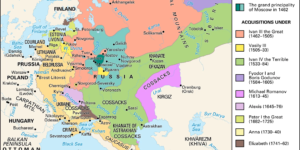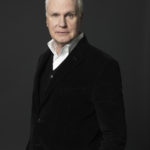Why Julian Assange Is At The Vanguard For World Press Freedom
No Comments yetWe celebrate World Press Freedom Day in May as a reminder that the role of news organizations is to speak truth to power. Not for manufacturing consent—to use Chomsky’s famous words—for the government and the ruling classes.
It’s an occasion to remember three people who exemplify the need to speak the truth: Daniel Ellsberg of Pentagon Papers fame and Julian Assange of WikiLeaks; and also of Chelsea Manning, without whom we would not have the proof of what the United States was doing, not only in Iraq and Afghanistan but all across the globe. In doing so, I will also deal with the changing nature of government “secrets”, what outing them means then and now.
In today’s day and world, just as the scale of the government’s powers to pry into our lives and activities has increased exponentially—for example, NSA’s Prism and NSO’s Pegasus—so has the scale of the leaks. Ellsberg’s Pentagon Papers were a mere 7,000 pages, and he photocopied them by hand (Daniel Ellsberg, The Doomsday Machine: Confessions of a Nuclear War Planner). Chelsea Manning’s “papers”, which Assange outed, earning the U.S. government’s enmity, consisted of about 750,000 documents (Iraq War logs, Afghanistan War logs and U.S. diplomatic cables). Manning used her computer to copy this enormous cache of data. Ellsberg had one of the highest security clearances in the U.S. government. Snowden, a system administrator, is assumed to have “exfiltrated” more than a million NSA documents.
Manning was low down in the military ranks and a mere corporal. Assange had identified one key characteristic of our epoch: the digital revolution means the enormous centralization of information and also the ease with which it can release. In a conference in 1984, Stewart Brand, an author, in a conversation with Steve Wozniak, the co-founder of Apple, had brought this duality of information in the digital age: the centralization of information as it is so valuable for the rulers. And also the ease of its duplication and therefore liberating it from the rulers. This is why Assange set up WikiLeaks. People, who had access to this valuable information stored in “secure” government vaults, could use WikiLeaks to reach the people. Both use the power of digital technologies and their ability to produce copies but for completely different purposes.
In 1971, a little over 50 years ago that Daniel Ellsberg leaked a study carried out by the U.S. Defense Department—the Pentagon Papers—on the Vietnam War to the New York Times and subsequently to a host of other news organizations. The anti-Vietnam War movement, which had exploded in the United States then, with cascading effects around the world for my generation, had turned Ellsberg into a radical. Just as it did many of us around the world who demonstrated against the United States and its war. The Vietnam War had discredited the U.S. empire and produced a radical generation, of which Daniel Ellsberg was a proud member.
The Pentagon Papers laid out in detail why the Vietnam War was already a lost cause and why Vietnamese people would defeat the neocolonial puppet government of Ngo Dinh Diem backed by the United States in South Vietnam. Though the study was completed in 1968 that the United States could not win, the United States had enlarged the war from a land and air war against the Vietnamese liberation forces in South Vietnam to the aerial bombardment of North Vietnam and Cambodia as well. Ellsberg believed that if the U.S. public learned the truth about the Vietnam War, they would help stop the war. This is why he, and a former colleague Anthony Russo, shared the Pentagon papers with the press. The U.S. people, he believed, had a right to know about the war being waged in their name.
The exposure of Pentagon papers helped the anti-war movement but did not stop the war. It took another four years—April 1975—before Vietnamese freedom fighters liberated Saigon. The pictures of the U.S. forces leaving in ignominy, clinging to helicopters as they lifted off from the roof of the U.S. embassy, are similar to what we saw recently in Kabul.
By the time we reached the Iraq War, the world of information had changed. Information was no longer in paper form. Copies were also not on paper. Digitizing information meant that enormous amounts could be collected, stored and used in real-time for the purpose of war: both its physical-kinetic variety and also the information war. The full power of the United States, its technology might, and its money power could be wielded to build not only the U.S. war machine but also what we now call the surveillance state. Not simply its invasion of every aspect of our lives but also in creating new, invisible hands of the Ministry of Truth. This is an information war of a different kind than in the days of Ellsberg photocopying the Pentagon Papers.
This is the world that Assange saw and understood. If Ellsberg understood the world of power, Assange understood the changing nature of how information is created in vast amounts continuously by the government, stored and transmitted. The very nature of technology that permits this almost costless duplication of information and its flows also makes it vulnerable to being shared and made available to the public.
Let us look at some numbers here. At the time of Ellsberg, there were perhaps a few hundred, maybe a maximum of 1,000, who had access to Pentagon papers and could have photocopied them by hand as he did. He had a security level of GS-18, a civilian equivalent to a clearance level somewhere between major general and lieutenant general in the military. Chelsea Manning was a “specialist”, the rank equivalent to that of a corporal in the U.S. armed forces. It is the nature of the change in technology that made it possible for a specialist holding a rank of a corporal to strike a body blow in the U.S. war in Iraq and Afghanistan. You need tech specialists to make the nuts and bolts of the global information infrastructure run. They may have “low” ranks but by virtue of being closest to the information on these vast military and diplomatic networks maintained by the Governments, they have complete access. And the computer, as a copying device, is a much more potent device for copying information. And lastly, the discs on which we copy data today, including our lowly thumb drive/memory stick, can store hundreds of thousands of pages!
It was Assange and WikiLeaks that made possible for Manning’s information to reach people across the globe. And even when he and Manning have been arrested, jailed and isolated, the information on Wikileaks still continues to be accessible to all of us. Even today. the Baghdad video of Collateral Murder, posted on WikiLeaks, was seen across the world and brought home that the United States was lying and involved in a massive cover-up of its war crimes. The Diplomatic Cables on Wikileaks informed the Tunisian people about the kleptocratic rule of the Ben Ali family and started what was later named as Arab Spring.
The battle of the Chagos islanders in the International Court of Justice (ICJ), illegally removed by the UK and the United States to set up the U.S. naval base in Diego Garcia, was partly based on documents from WikiLeaks. This is only a very small fraction of the information that is now available to activists, and it cannot be erased either from the Internet or from our memory. Just as the surveillance state has invaded every nook and corner of our lives, the pathological need of the surveillance state to access and store all this information also makes the state porous and vulnerable.
The latest example of this vulnerability is that a 21-year-old lowly Air National Guard, Jack Teixeira, had access to the top secret documents of the Pentagon and the CIA on Ukraine. He shared these documents on a private Discord gaming server, not for any noble purpose of stopping the war, but for simply getting bragging rights. Whether this was the only leak, are others also leaking documents to create a fog of war, is a mixture of leaks, or are they also plants is another story. What is important to this story is that Airman Teixeira, though near the bottom of the ladder in the U.S. Air Force, has access to top secret documents, normally seen by the top echelons of the armed forces and the intelligence authorities of the United States. He was part of a team that managed the core network and was one of the 1.5 million people who had this level of access.
Yes, we today are in a panopticon of the surveillance state where our rulers can look into every part of our lives. But what Manning and Teixeira show us is that the same technology that allows them to look at what we are doing also works in reverse. As long as we have Assange, Ellsberg, Manning and others, they are also visible to us. As the English poet Shelly wrote in 1819 after the Peterloo Massacre, “Ye are many, they are few.” This has not changed in the digital age as well.
Author Bio:
This article was produced in partnership by Newsclick and Globetrotter
Prabir Purkayastha is the founding editor of Newsclick.in, a digital media platform. He is an activist for science and the free software movement.
Source: Globetrotter
Comments
Leave a Reply
